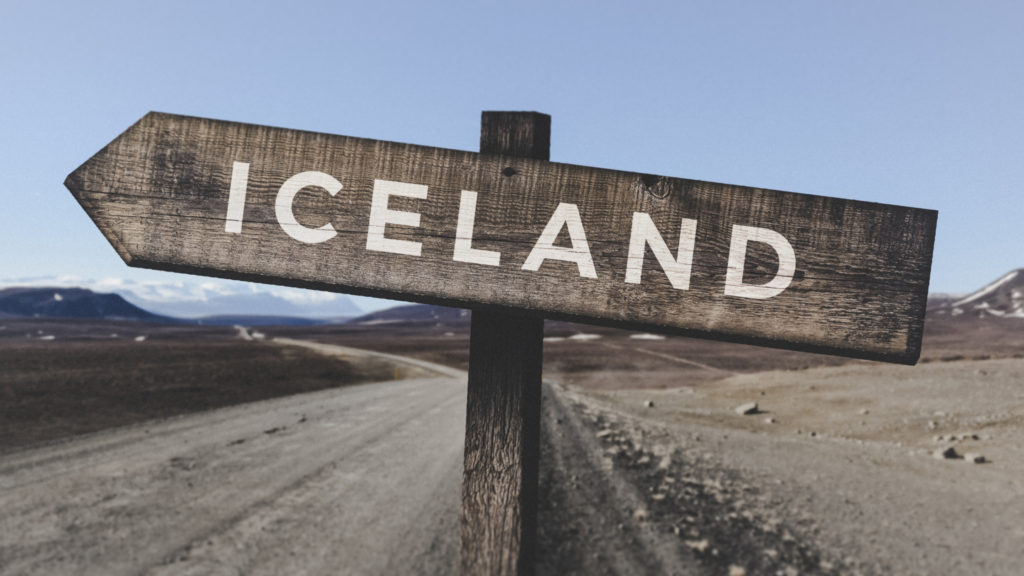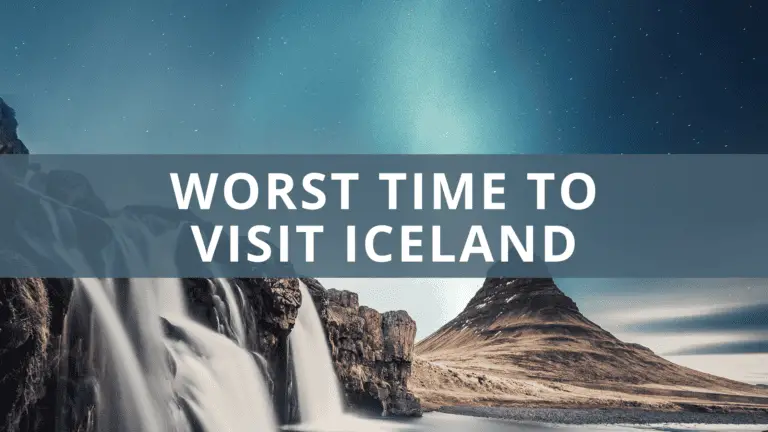What’s the Worst Time to Visit Iceland – Plus 7 Top Tips
Iceland is one of the most beautiful countries in the world, with its stunning landscapes, vibrant culture, and unique natural wonders. It’s no surprise that this North Atlantic island nation is a popular tourist destination, attracting millions of visitors each year. But if you’re planning a trip to Iceland, it’s important to understand when the best time to go is – and when it’s not.
In this article, we’ll be discussing the worst time to visit Iceland, plus some top tips for those who are planning to visit during that time.
What’s the Worst Time to Visit Iceland?
The worst time to visit Iceland is during peak tourist season. The peak tourist season in Iceland runs from June to August, and during these months, you can expect to see crowds of visitors flocking to the country to take advantage of the long daylight hours and warmer weather.
Unfortunately, this also means that prices are higher, accommodations are more difficult to find, and many of the popular tourist sites are overrun with visitors. If you’re looking to have a relaxing, stress-free vacation, then visiting during the peak season is probably not the best idea.
Understanding Iceland’s Climate
It’s important to understand the climate of Iceland to determine the best time to visit. The country has four distinct seasons: spring, summer, autumn, and winter.
Spring
Spring in Iceland is from March to May and is characterized by mild temperatures and longer days. This is a great time to visit if you’re interested in exploring the countryside, as many of the country’s famous waterfalls and glaciers start to thaw, creating some spectacular sights.
Summer
Summer in Iceland is from June to August, as mentioned above, this is the peak tourist season and is characterized by long daylight hours and warmer weather.
Autumn
Autumn in Iceland is from September to November, and during this time the weather starts to cool down and the days get shorter. This is a great time to visit if you’re interested in seeing the Northern Lights, as the dark skies provide the perfect backdrop for this incredible natural phenomenon.
Winter
Winter in Iceland is from December to February and is characterized by short days, cold temperatures, and snow. If you’re looking to experience the unique beauty of an Icelandic winter, this is the time to go. However, be prepared for the cold and make sure you bring all the necessary gear to stay warm and safe.

The Impact of Crowds on Your Visit
Crowds can greatly impact your experience while visiting Iceland, especially during the peak tourist season. The high volume of visitors during this time can make it difficult to find accommodations, get a table at a restaurant, or have a peaceful moment at some of the country’s most famous tourist sites.
If you’re looking to avoid the crowds, consider visiting Iceland during the off-season. During the spring and autumn months, you’ll still be able to see many of the country’s famous sights, but with fewer visitors, you’ll be able to fully enjoy the peace and quiet that Iceland is known for.
Another way to avoid crowds is to explore some of the country’s less touristy areas. Head out into the countryside and visit some of the smaller villages and towns that are often overlooked by visitors. You’ll be able to immerse yourself in the local culture and experience a more authentic side of Iceland.
The Cost of Visiting Iceland
Visiting Iceland can be an expensive proposition, especially during the peak tourist season. Accommodations, food, and transportation all cost more during this time. If you’re on a budget, it’s important to consider the cost when planning your trip.
Visiting during the off-season can save you money on many of your travel expenses. Accommodations and transportation are usually more affordable, and you may be able to find deals on food and other activities. Keep in mind, however, that some tourist sites may be closed during the off-season, so make sure to do your research before planning your itinerary.
7 Top Tips for Visiting Iceland During the Worst Time
Now that you understand the worst time to visit Iceland, here are some tips to help you make the most of your trip if you decide to go during this time:
1. Book Accommodations Early
During the peak tourist season, accommodations can fill up quickly, so make sure to book your room or camping spot as early as possible. This will give you peace of mind and ensure that you have a place to stay when you arrive.
2. Plan Your Itinerary Carefully
With so many tourists in Iceland during the peak season, it’s important to plan your itinerary carefully to avoid the crowds. Make sure to research the best times to visit each site and plan your trip accordingly.
3. Be Flexible
With so many people in Iceland during the peak season, it’s important to be flexible and open to changing your plans if necessary. If a popular site is too crowded, consider visiting a different site or taking a break and enjoying a meal or a drink at a local café.
4. Rent a Car
Renting a car is a great way to see Iceland, especially if you want to avoid the crowds. With a car, you can visit less touristy areas and experience the country at your own pace.
5. Pack Appropriately
During the peak tourist season, it’s important to pack appropriately for the weather. Make sure to bring clothing that will keep you warm and dry, as well as sturdy footwear for hiking and exploring.
6. Be Prepared for the Weather
The weather in Iceland can change quickly, so make sure to be prepared for any eventuality. Bring a rain jacket, a hat, and gloves, and be ready for sudden downpours or strong winds.
7. Embrace the Crowds
Finally, embrace the crowds and enjoy the energy of the peak tourist season. Meet other travelers, chat with the locals, and make the most of your time in Iceland.
Frequently Asked Questions
What’s the best time to visit Iceland?
The best time to visit Iceland depends on your personal preferences and travel style. If you’re looking to experience the country’s natural beauty and avoid the crowds, consider visiting during the spring or autumn months. If you’re interested in seeing the Northern Lights, autumn is the best time to go.
Can you visit Iceland in winter?
Yes, you can visit Iceland in winter, but be prepared for the cold and short days. Winter is a great time to experience the unique beauty of an Icelandic winter, but make sure to bring all the necessary gear to stay warm and safe.
Is it expensive to visit Iceland during the peak tourist season?
Yes, visiting Iceland during the peak tourist season can be expensive. Accommodations, food, and transportation all cost more during this time. If you’re on a budget, it’s important to consider the cost before planning your trip and look for deals or discounts to help save money.
Are there many tourists in Iceland during the off-season?
The number of tourists in Iceland during the off-season is much smaller compared to the peak tourist season. This can be a great time to visit if you’re looking for a more relaxed and peaceful experience.
Can you still see the Northern Lights during the off-season?
Yes, you can still see the Northern Lights during the off-season, but the visibility will depend on the weather conditions and the darkness of the sky. If you’re hoping to see the Northern Lights, consider visiting during the autumn or winter months when the sky is darker.
Conclusion to the Worst Time To Visit Iceland
Traveling during the worst time to visit Iceland, or the peak tourist season, can be challenging, but with the right preparation and mindset, it can also be an unforgettable experience. Just remember to book accommodations early, plan your itinerary carefully, be flexible, rent a car, pack appropriately, and embrace the crowds. And if you have any questions, don’t hesitate to reach out!
- What to Wear in Cancun by Month & Activity (And Not!) - March 13, 2023
- What to Wear in New York by Month & Activity (And Not!) - March 13, 2023
- What to Wear in Morocco by Month & Activity (And Not!) - March 13, 2023

